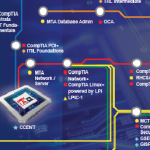A few years ago, my wife was attempting to take my son’s Nintendo DS away from him as a form of punishment for not listening to her. It was the toy he loved the most and like most kids that age, he was glued to the device. He was 8. He screamed “I am nothing without my Nintendo DS.” I was in my office shrieking with laughter at the dramatics. As I reflect today, there is a lesson there.
In Korea, families spend more of their disposable income (22%) than any other nation on their family’s education. Within 2 years, all elementary school education in Korea will be delivered via tablet or other device. In Kent in the South East of England, the Longfield Academy school has provided their students with an iPad (not entirely free, but that is besides the point). I think it goes without saying what has happened to the levels of immersion and concentration in the classroom in those institutions that have adopted the technology that kids were born with – they are digital natives after all.
I have talked before about technology, gadgetry and the internet being the ‘oxygen’ for our youngsters – for them a computer or smartphone is a gateway to a world of communications. So, let’s start building lessons and assignments on these devices, give them the gadgets so that the kids are learning via the tools they are so comfortable with. As Secretary of State for Education, Michael Gove, said earlier this year, a Victorian schoolteacher could quite easily pick up where she left off in delivering a class in today’s school.
The problem is more ours than theirs – give the kids the tools and technologies that they devour each day, and I think we will be pleasantly surprised by the levels of creativity and engagement.










 I wonder how long it will take before email is passé. Our youngsters today are less inclined to send email because it is too long a process, and instant messaging is fast and with-it! I hear some unversities have stopped distributing email accounts to their students, and instead are giving out eReaders, iPads and Tablet computers – that’s the kind of place I would like to study.
I wonder how long it will take before email is passé. Our youngsters today are less inclined to send email because it is too long a process, and instant messaging is fast and with-it! I hear some unversities have stopped distributing email accounts to their students, and instead are giving out eReaders, iPads and Tablet computers – that’s the kind of place I would like to study.